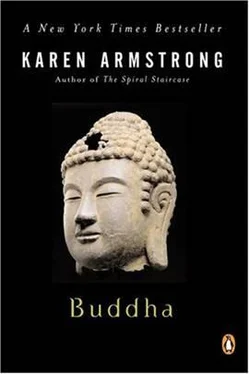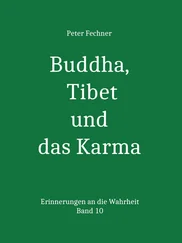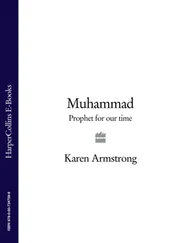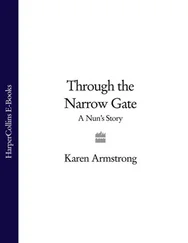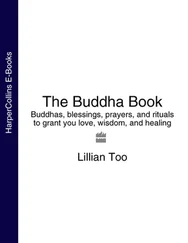The Buddha’s serenity and gentleness reassured Yasa at once. He no longer felt that sickening dread, but was happy ‘ and hopeful. With his heart joyful and at peace, he was in exactly the right mood for enlightenment. He took off his slippers and sat down beside the Buddha, who instructed him in the Middle Way, step by step, beginning with very basic teaching about the importance of avoiding tanha and sensual pleasure, and describing the benefits of the holy life. But when he paw that Yasa was receptive and ready, he went on to teach him the Four Noble Truths. As Yasa listened, “the pure vision of the Dhamma rose up in him,” and the truths sank into his soul, as easily, we are told, as a dye penetrates and colors a clean piece of cloth. Once Yasa’s mind had been “dyed” by the Dhamma, there was no way of separating the two. This was “direct knowledge,” because Yasa had experienced the Dhamma at such a profound level that he had wholly identified with it. It had transformed him and “dyed” his entire being. This would be a common experience when people heard the Dhamma for the first time, especially when instructed by the Buddha himself. They felt that the Dhamma fit their needs perfectly, that it was entirely natural and congenial to them, and that, in some sense, they had always known it. We do not find in the Pali texts any agonized or dramatic conversions, similar to St. Paul ’s on the road to Damascus. Any such wrenching experience would have been regarded by the Buddha as “unskillful.” People must be in tune with their natures, as he himself had been under the rose-apple tree.
Just as Yasa had become a “stream-enterer,” the Buddha noticed an older merchant coming toward them and realized that this must be Yasa’s father; he then had recourse to the iddhi or spiritual powers that were thought to come with advanced proficiency in yoga, and made Yasa disappear. Yasa’s father was greatly distressed; the whole household was searching for Yasa, but he had followed the print of the golden slippers which brought him directly to the Buddha. Again, the Buddha made the merchant sit down, hinting that he would see Yasa very soon, and instructed the father as he had the son. The merchant was immediately impressed: “Lord, that is superb! Quite superb!” he cried. “The Dhamma has been made so clear that it is as though you are holding up a lamp in the darkness and putting right something that has gone profoundly wrong.” He was then the first to make what has since become known as the Triple Refuge: an assertion of complete confidence in the Buddha, the Dhamma, and the Sangha of bhikkhus. He also became one of the first lay followers, who continued to live as a householder but practiced a modified form of the Buddhist method.
As Yasa, unseen by his father, listened to the Buddha, he attained full enlightenment and entered into Nibbana. At this point, the Buddha revealed him to his father, and the merchant begged Yasa to return home, if only for his mother’s sake. The Buddha, however, gently explained that Yasa had become an Arahant and would now find it impossible to live the life of a householder. He was no longer afflicted by the cravings and desires that would enable him to fulfill a householder’s reproductive and economic duties; he would require hours of silence and privacy for meditation that would not be possible in a family home. He could not return. Yasa’s father understood, but begged the Buddha to dine at his house that lay, with Yasa as his attendant monk. During the meal, the Buddha instructed Yasa’s mother and his former wife, and they became the Buddha’s first women lay disciples.
But the news spread beyond the household. Four of Yasa’s friends, who came from Varanasi ’s leading merchant families, were so impressed when they heard that he was now wearing the yellow robe that they came to the Buddha for instruction. So did fifty of Yasa’s friends from brahmin and ksatriya families in the surrounding countryside. All these young men from the noble and aristocratic castes soon achieved enlightenment, so that in a very short space of time, there were, the texts tell us, sixty-one Arahants in the world, including the Buddha himself.
The Sangha was becoming a sizeable sect, but the new Arahants could not be allowed to luxuriate in their newfound liberation. Their vocation was not a selfish retreat from the world; they too had to return to the marketplace to help others find release from pain. They would now live for others, as the Dhamma enjoined. “Go now,” the Buddha told his sixty bhikkhus,
and travel for the welfare and happiness of the people, out of compassion for the world, for the benefit, welfare and happiness of gods and men. No two of you go the same way. Teach the Dhamma, bhikkhus , and meditate on the holy life. There are beings with only a little desire left within them who are languishing for lack of hearing the Dhamma; they will understand it.
Buddhism was not a doctrine for a privileged elite; it was a religion for “the people,” for “the many ( bahujana ).” In practice, it appealed mostly to the upper classes and to intellectuals, but in principle it was open to anybody, and nobody, whatever his or her caste, was excluded. For the first time in history, somebody had envisaged a religious program that was not confined to a single group, but was intended for the whole of humanity. This was no esoteric truth, like that preached by the sages of the Upanisads. It was out in the open, in the towns, the new cities and along the trade routes. Whenever they heard the Dhamma, people started to throng into the Sangha, which became a force to be reckoned with in the Ganges plain. The members of the new Order were known as “The Ordained Followers of the Teacher from Sakka,” but they called themselves simply the Union of Bhikkus ( Bhikkhu-Sangha ). People who joined found that they had “woken up” to whole regions of their humanity which had hitherto lain dormant; a new social and religious reality had come into being.
buddhist art usually depicts the Buddha sitting alone, lost in solitary meditation, but in fact the greater part of his life, once he had begun to preach the Dhamma, was spent surrounded by large, noisy crowds of people. When he traveled, he was usually accompanied by hundreds of bhikkhus, who tended to chatter so loudly that occasionally the Buddha had to plead for a little quiet. His lay disciples often followed the procession of monks along the roads, in chariots and wagons loaded with provisions. The Buddha lived in towns and cities, not in remote forest hermitages. But even though the last forty-five years of his life were passed in the public eye, the texts treat this long and important phase rather perfunctorily, leaving the biographer little to work with. It is quite the opposite with Jesus. The Gospels tell us next to nothing about Jesus’s early life and only seriously begin their story when he starts his preaching mission. The Buddhist scriptures, however, record the Buddha’s sermons and describe the first five years of his teaching career in some detail, but after that the Buddha fades from view and the last twenty years of his life are almost entirely unrecorded.
The Buddha would have approved of this reticence. The last thing he wanted was a personality cult, and he always insisted that it was the Dhamma and not himself that was important. As we have noted, he used to say, “He who sees me sees the Dhamma, and he who sees the Dhamma sees me.” Furthermore, after his enlightenment nothing else could really happen to him. He had no “self,” his egotism had been extinguished, and he was known as the Tathagata, one who had, quite simply, “gone.” Even when the Pali texts do recount the early years of his mission, they are less interested in historical fact and more interested in the symbolic meaning of their stories. The Buddha had become an archetype of the spiritual life, an embodiment of the Dhamma and of Nibbana. He was a new kind of human being: no longer caught in the toils of greed and hatred, he had learned to manipulate his psyche in order to live without egotism. He was still living in the world, but inhabited another sacred dimension, too, which monotheists would call the divine presence. In their account of these first teaching years, the texts tell us nothing about the Buddha’s thoughts and feelings, therefore, but use his activities to show how the early Buddhists related to the urban, commercial, political and religious world of north India.
Читать дальше
